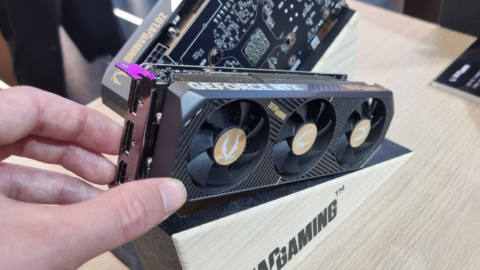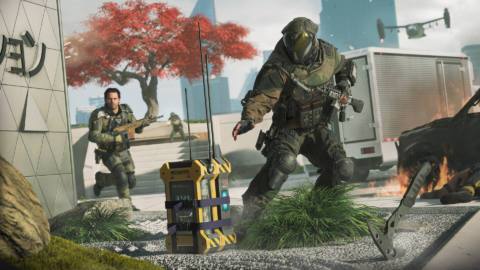“Why not?”
That was the answer Bandai Namco's Tatsuhiro Suzuki fired back when I asked a question bordering on the perverse: Does Gundam Breaker 4 let you mix regular and SD Gundam parts while cobbling together a mecha of your very own? To demonstrate, one of the developers selected the normally-sized head of our in-progress Gundam build and swapped it for one of the chibi, or “super-deformed,” Gundam head pieces, like someone surgically attaching Clifford the Big Red Dog's noggin to a dachshund. Then to prove the point, he tapped a button to make the head even bigger before scaling it down to something more size-appropriate for the rest of our build. Still, we'd basically just put a pair of googly eyes on a war machine.
“Every single part you can change the scale of, so technically you can make the SD look HD,” joked Suzuki.
Officially, the tagline for Gundam Breaker 4 seems to be “create your own ultimate Gundam.” But the unofficial mantra of the development team behind this new mecha action game, who I recently interviewed in Tokyo, seems to be, like Suzuki said, “Why not?” The root idea of the series, which last saw an entry with 2018's New Gundam Breaker, is different from most other Gundam games. Where those games typically focus on the experience of being a Gundam pilot, whether that manifests as a strategy game, first-person shooter or 3D arena fighter, Gundam Breaker is all about the model kits.
These days the plastic Gunpla hobby scene is international and far more popular (and lucrative) than any of its related anime series or videogames. Bandai Namco has sold more than 500 million kits since it debuted the very first model for the RX-78-2 Gundam in 1980. While in Tokyo I visited Bandai Namco's Gundam factory and got to see the metal mold for that original kit, which is still in working order four decades later. The model itself is incredibly simple by today's standards, with barely any articulation to speak of—I hope you like an off-white figure that stands stiffly upright.
Taro Inayoshi, chief of Bandai Namco's hobby creation division, proudly showed off that old kit to make the point that today's Gunpla are totally different beasts, with intricate interior skeletons and ball joints that let them recreate any freeze-frame moment from the shows they're based on.
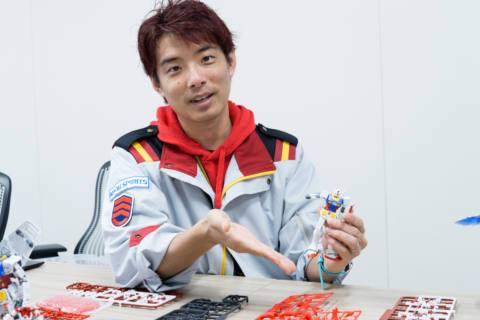
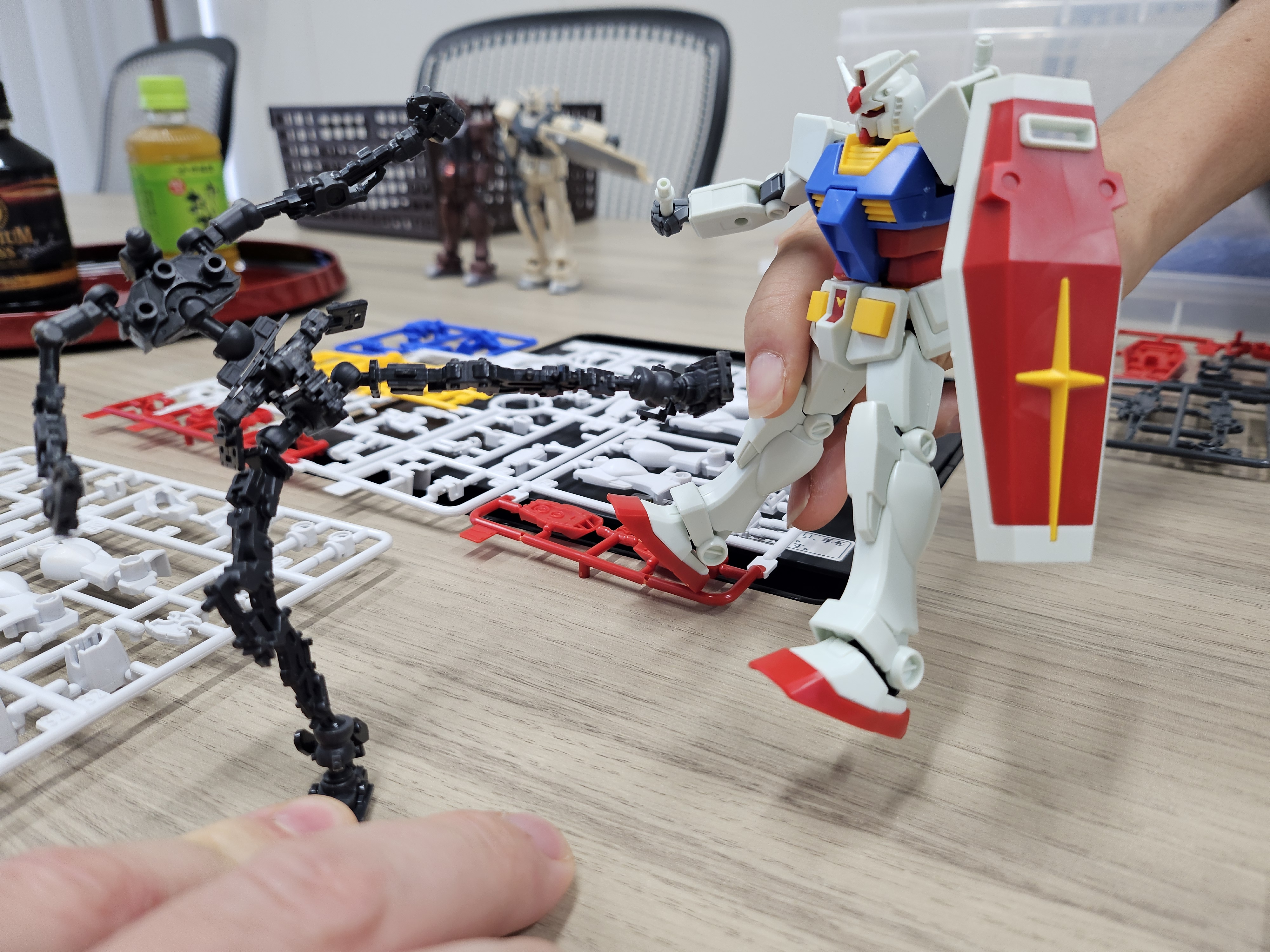
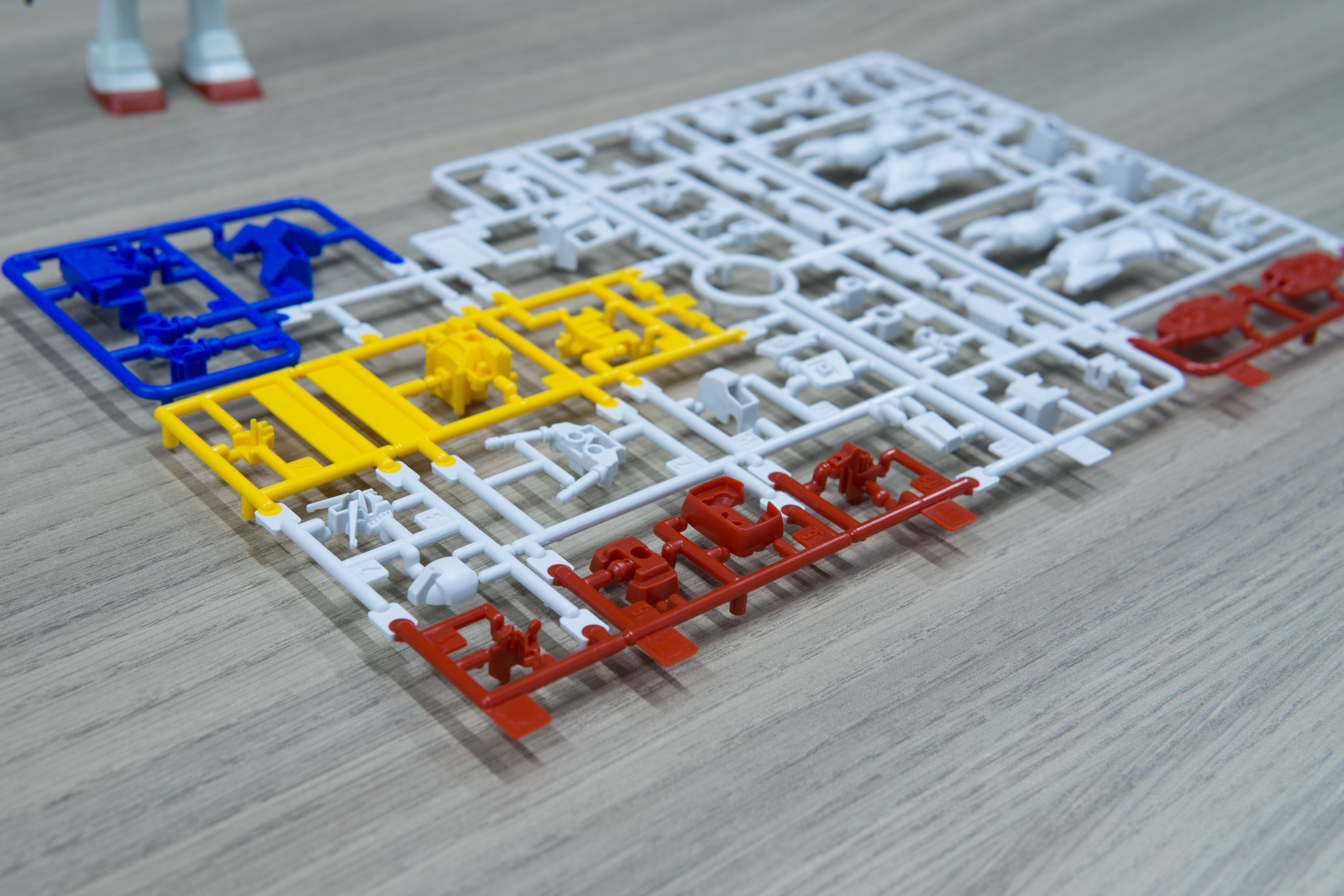
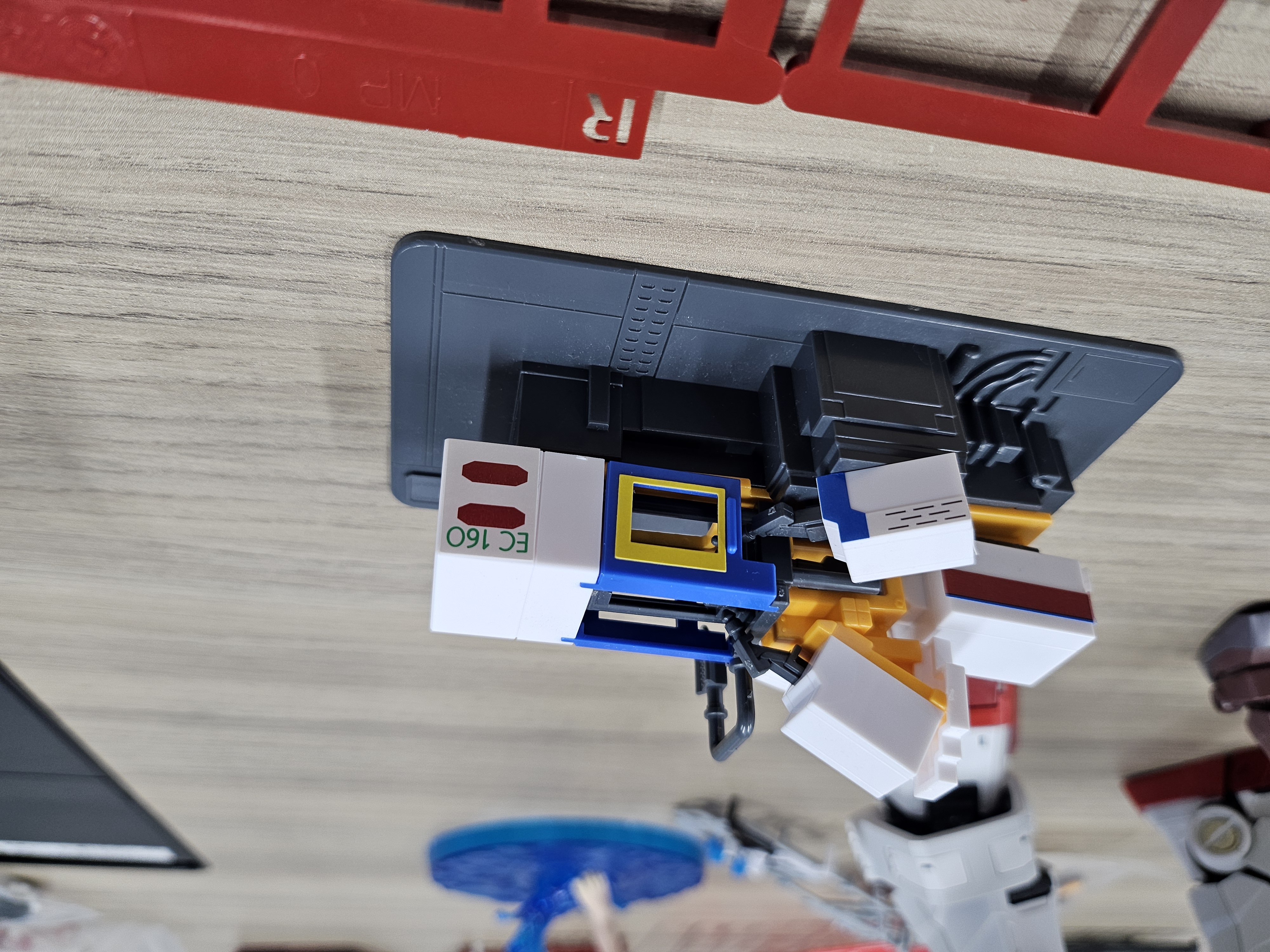
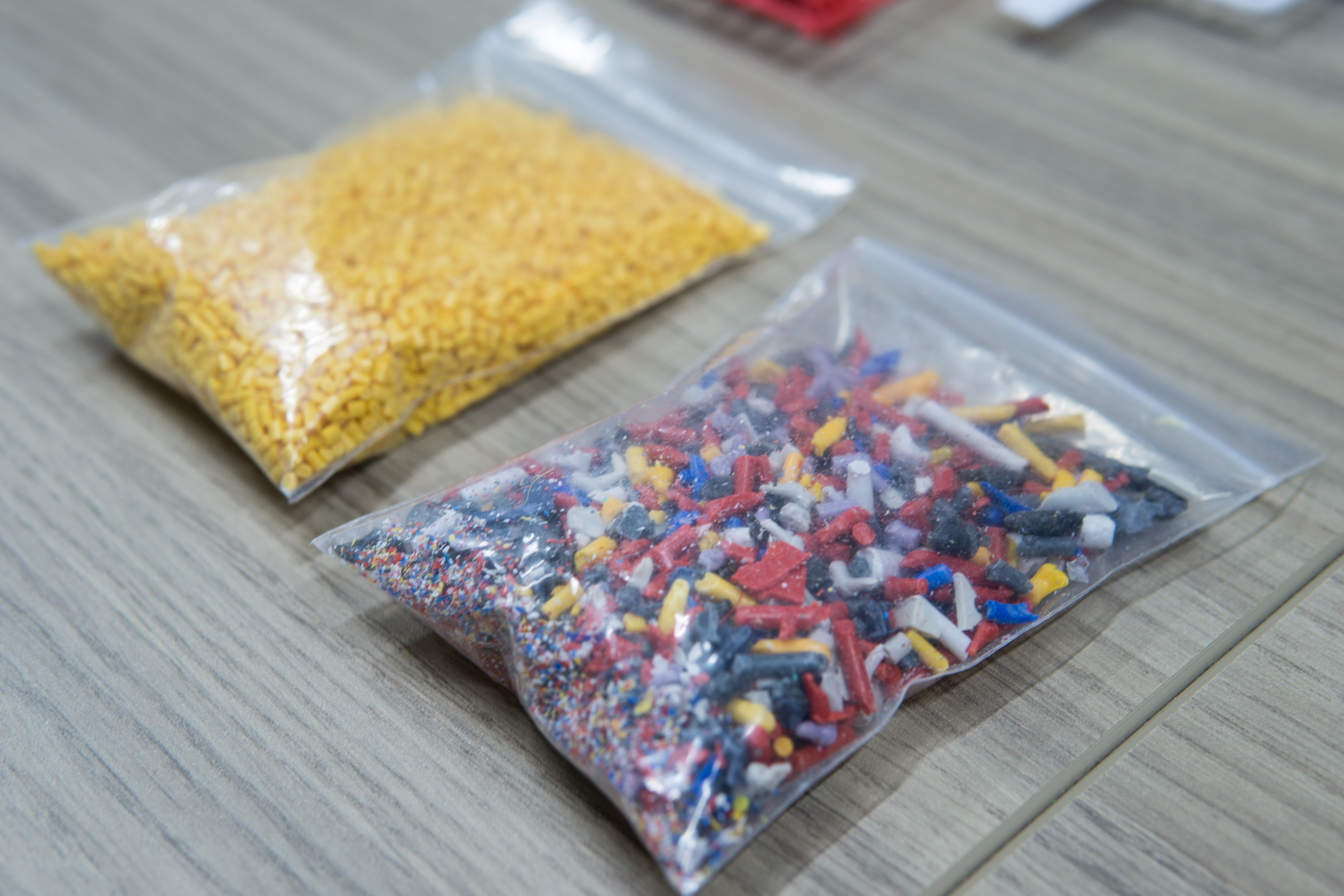
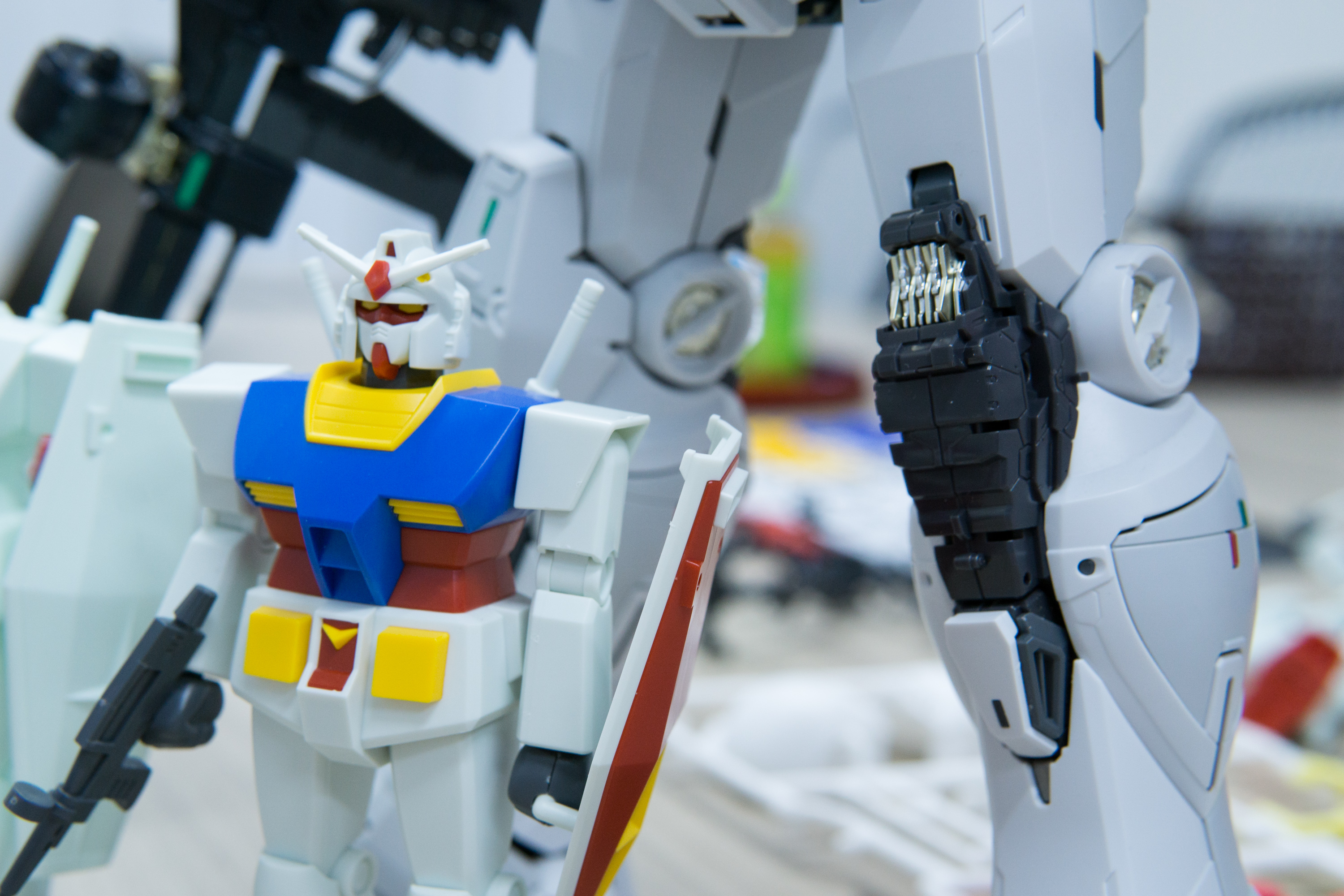
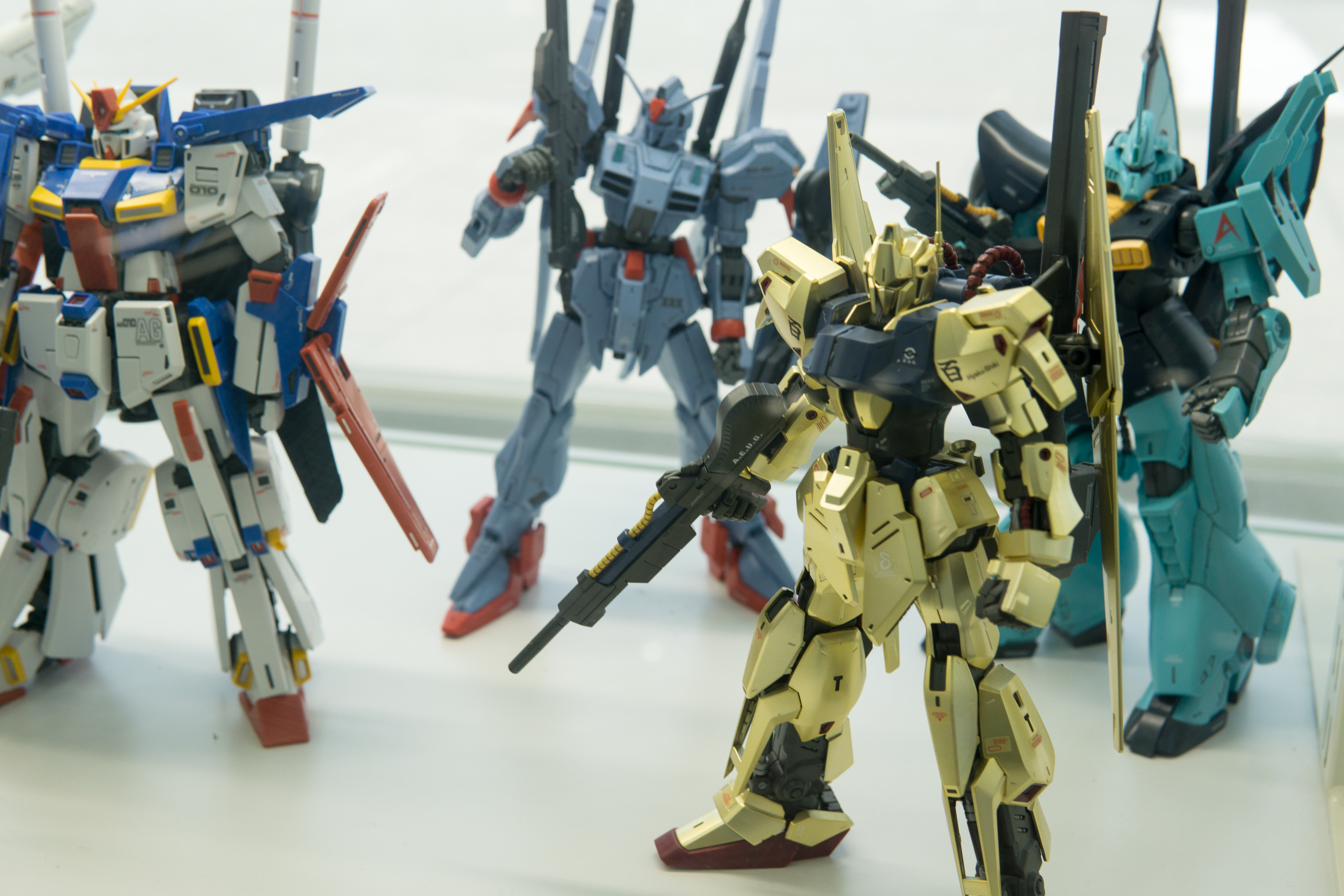
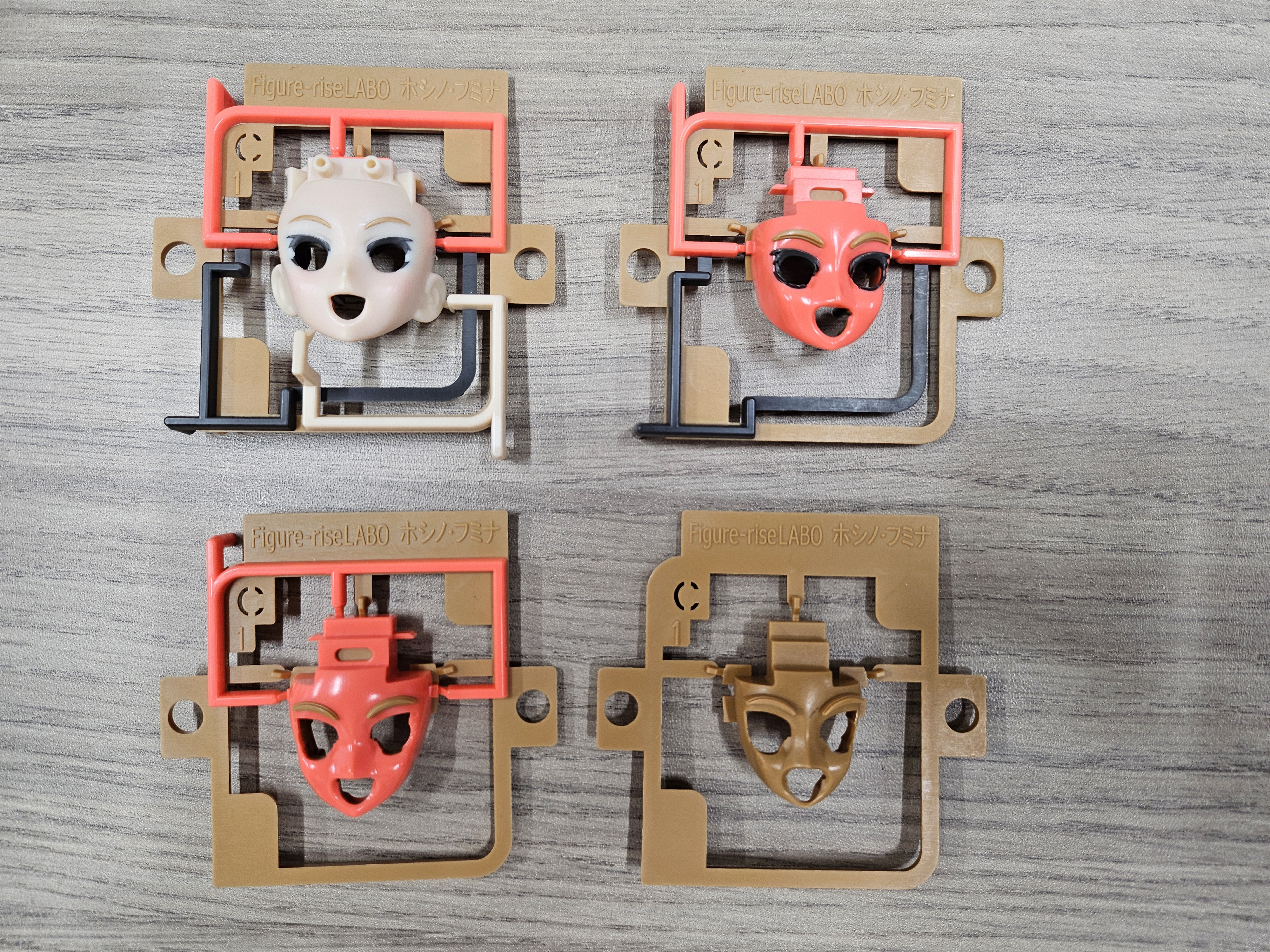
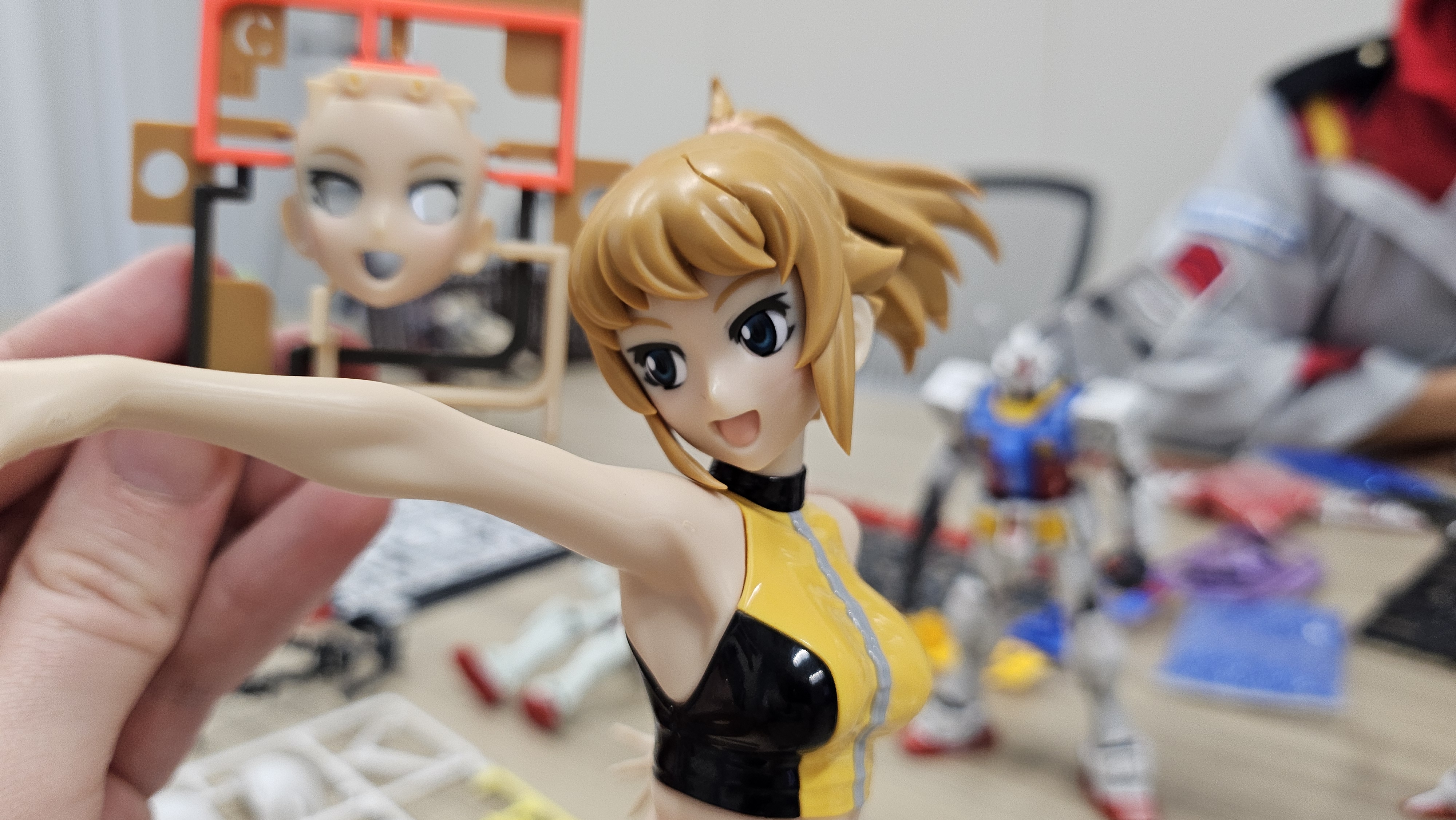
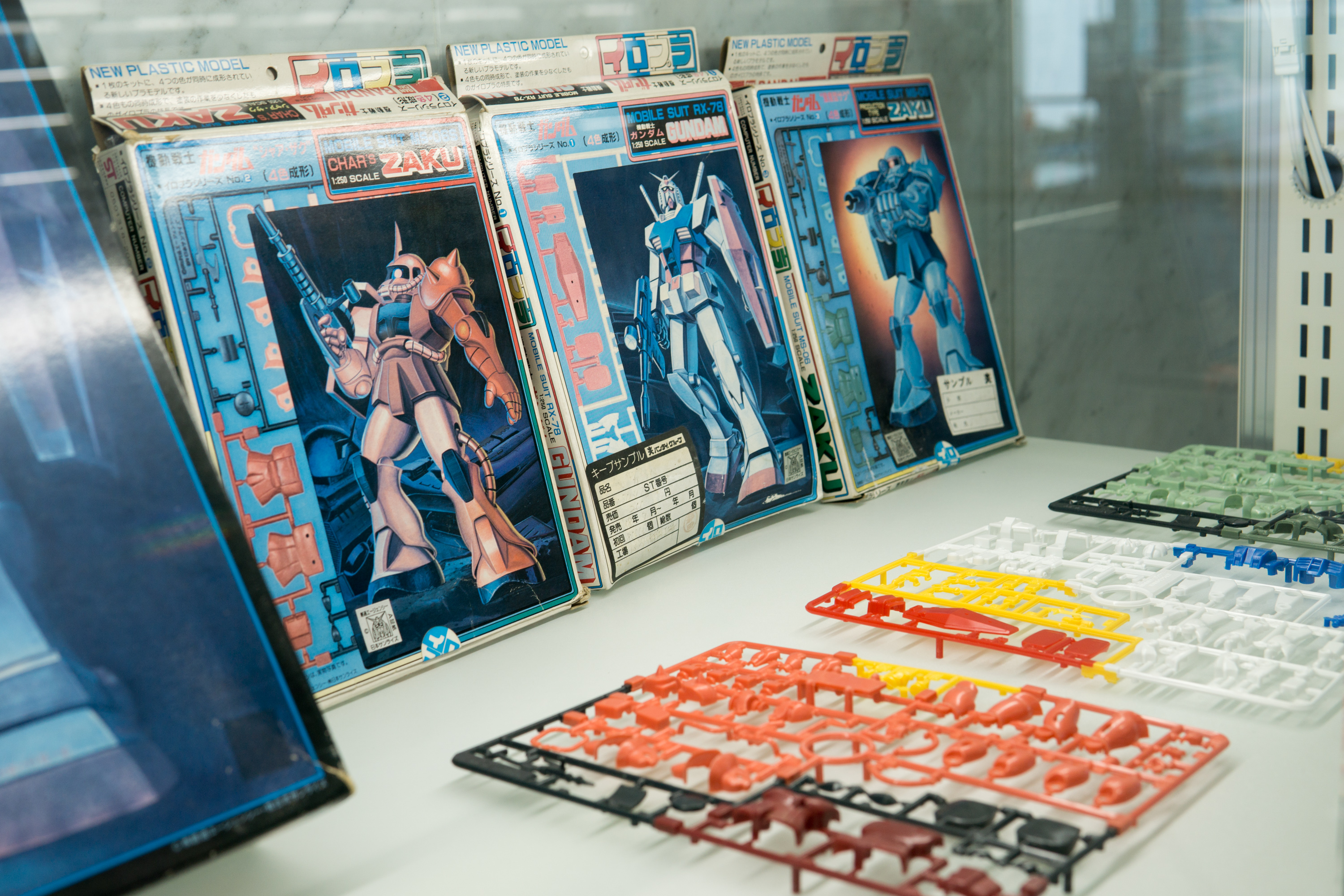
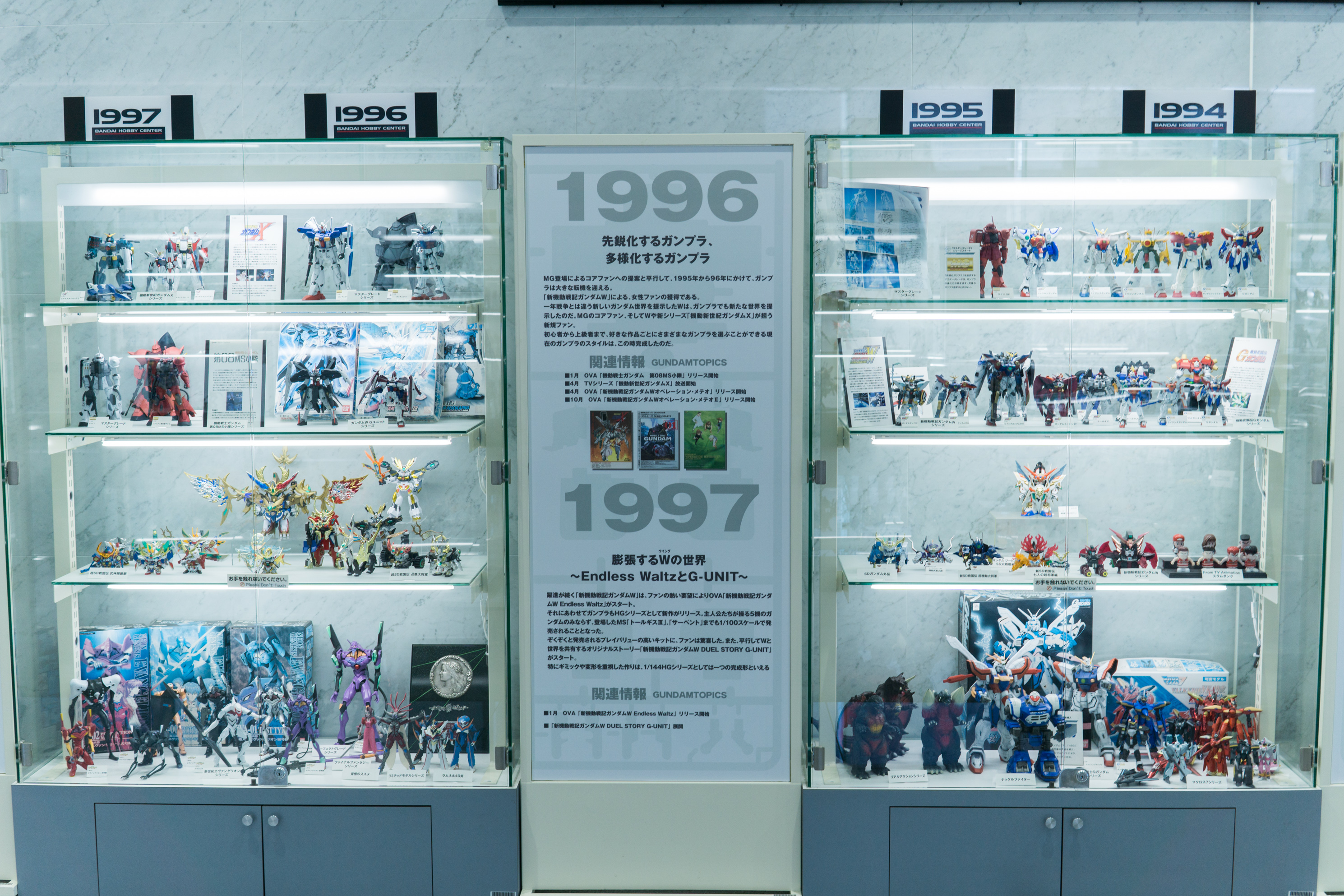
Inayoshi told me that the factory runs pretty much 24 hours a day, 365 days a year, each day pumping out some 70,000 “runners”—the individual injection-molded plastic trays that hold dozens of parts waiting to be punched out. That averages out to about 10,000 model kits a day, a number that will be going up in the future as Bandai Namco brings another factory online. Inayoshi's creative team is responsible for designing new Gunpla kits as well as other models, from Pokémon to Star Wars. They create some 350 new designs a year, a pace I don't envy having to work at (though I do envy their team jackets, styled after the uniforms from the original Gundam anime).
I haven't visited the factories for any of Bandai Namco's modelmaking competitors, but I don't think Inayoshi is blowing smoke when he says that the competition can only manufacture runners with 1-2 colors of plastic being molded together at once. Modern Gunpla's secret sauce, which has allowed the kits to grow consistently more intricate and better-looking over the last decade, is that Bandai's assembly line machines can injection-mold four colors at once. That may not sound like a big deal—why not just put the different-colored parts on different runners?—but it opens the door to more color variety in kits, gives the designer flexibility in how they arrange parts, and makes the logistics of producing those 70,000 runners a day a bit more feasible.
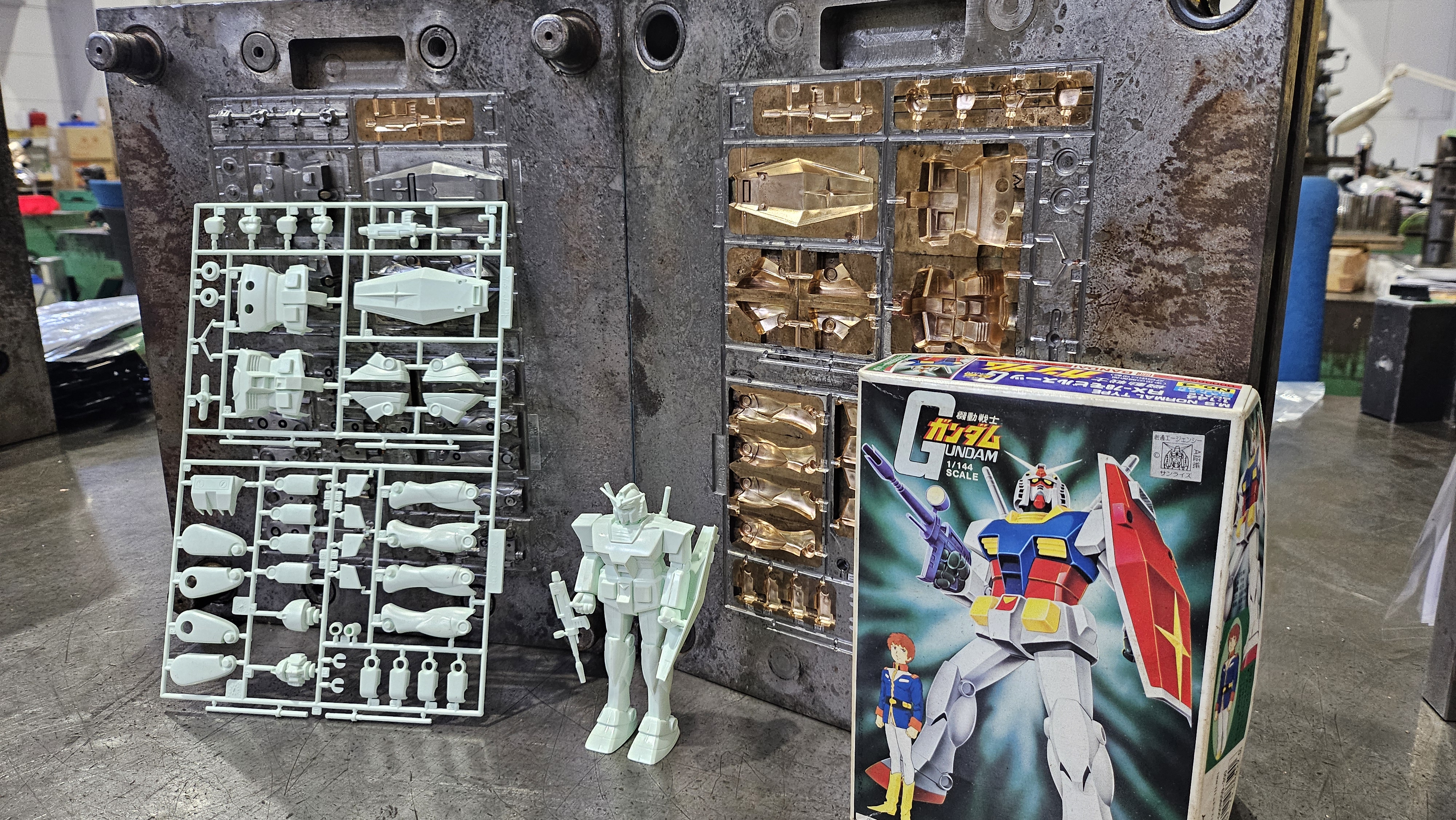
To put a point on this tangent into Gunpla production, Bandai Namco's so successfully ramped up this side of the hobby that even the most dedicated model builders couldn't hope to build all the kits. Even trying sounds like a surefire ticket to bankruptcy and early onset arthritis. But Gundam Breaker 4 offers the alternative of kitbashing more than 250 of those models into your own creations, whether that's outfitting the '80s Zeta Gundam with the more rounded chestpiece of Aerial, the star Gundam from hot new series Witch From Mercury, or making some kind of abomination with the squad body of a green SD Zaku with the shrunken head of golden masterpiece Hyaku Shiki.
New to Gundam Breaker 4 is a diorama mode where you can pose custom and stock Gundams into a battle scene, complete with anime-appropriate poses and backgrounds and props to embellish the scene. This is in addition to a basic photo mode and is the kind of feature that a small percentage of players will almost certainly create amazing things with.
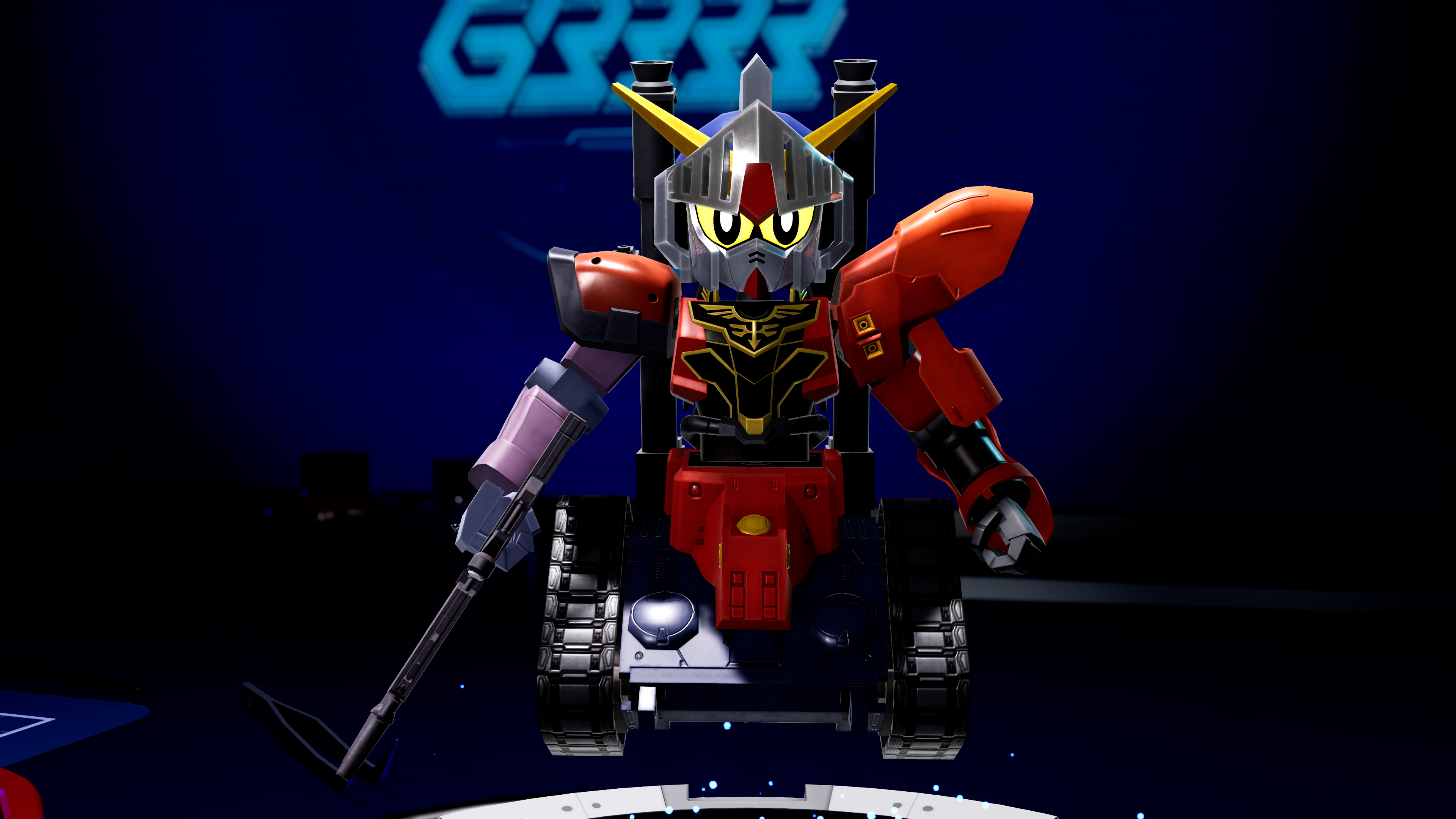
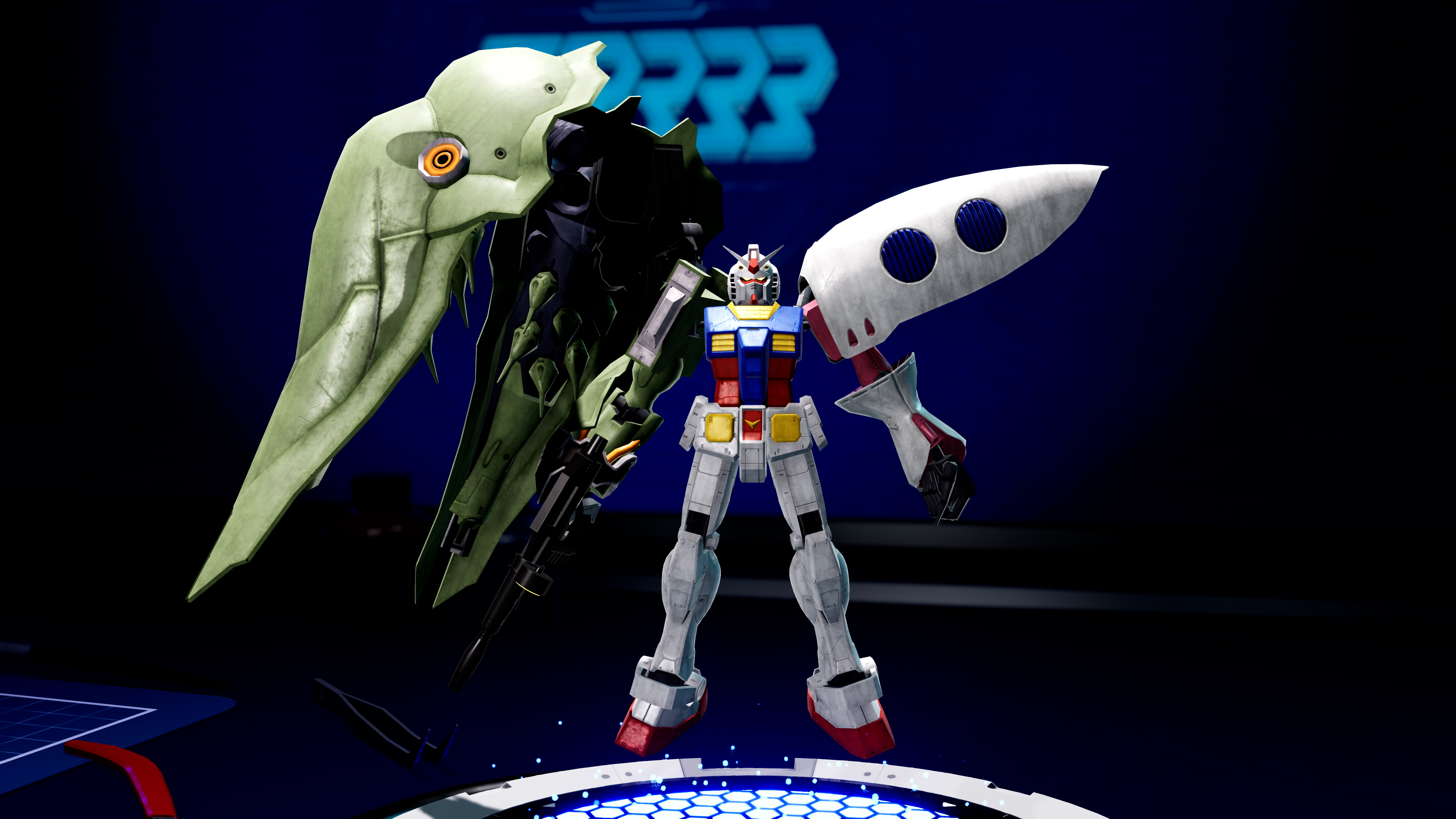
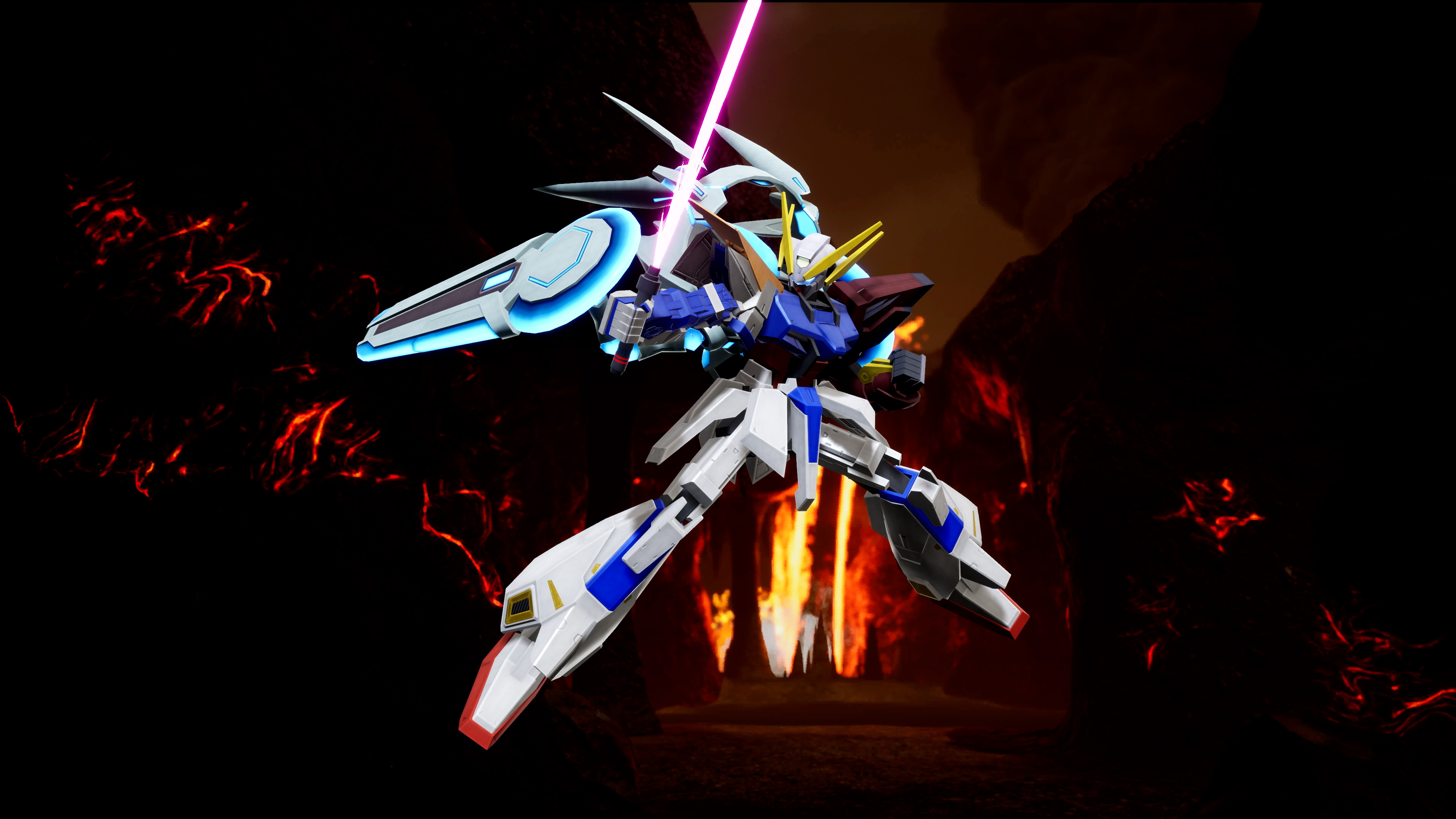
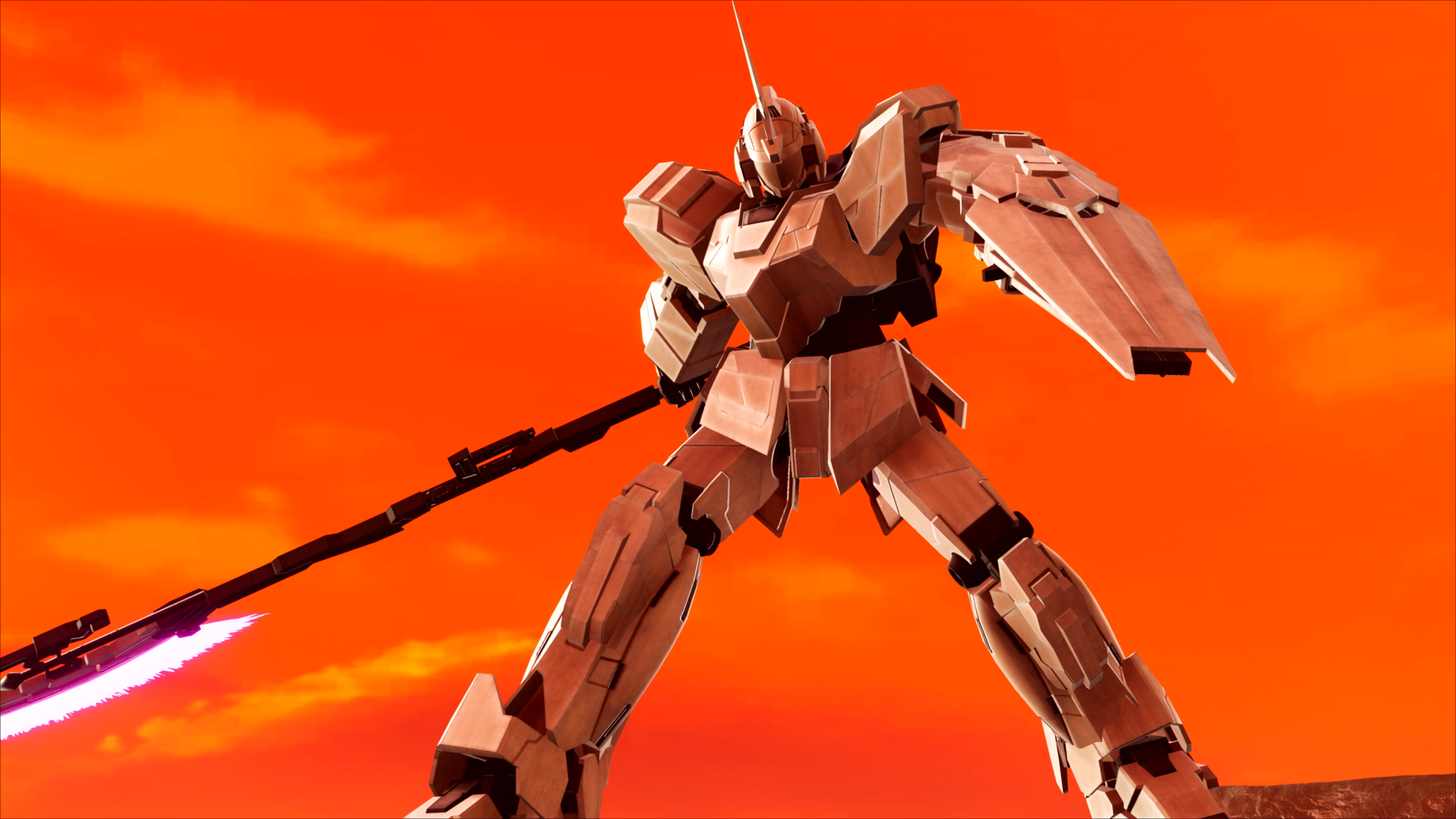
“If you wanted to do this in real life, making these dioramas, it's going to be super expensive,” said Suzuki. “But in a game, why not? We can do it in five minutes. That's [another way] we're reaching out to Gunpla fans as well.”
The actual meat of Gundam Breaker 4 is an action game that plays a bit like a simplified version of the Gundam Extreme Vs. series, which has more of a technical fighting system at its core. It's also not much like last year's Armored Core 6, which emphasizes the propulsive power of your mech and is (sorry for the cliche) so much more visceral. AC6 wants you to feel the Gs when you kick into an overboost and the whole screen blurs around you. By comparison Gundam Breaker 4 is an easygoing popcorn game that knows it's silly and embraces it: in-fiction you're fighting with model Gundams, not “real” hundred-ton steel gods.
It's really a looter shooter: every battle you'll wipe the floor with mobs of weak enemies, and at the end of the mission you'll scroll through a list of rewards, piles of arm and leg and head and chest parts with rarity levels that tweak your machine's stats. I found combat to be breezily button-mashy, with a set of customizable equipment for special attacks and items like heals on cooldowns doing most of the work to shape my strategy in combat.
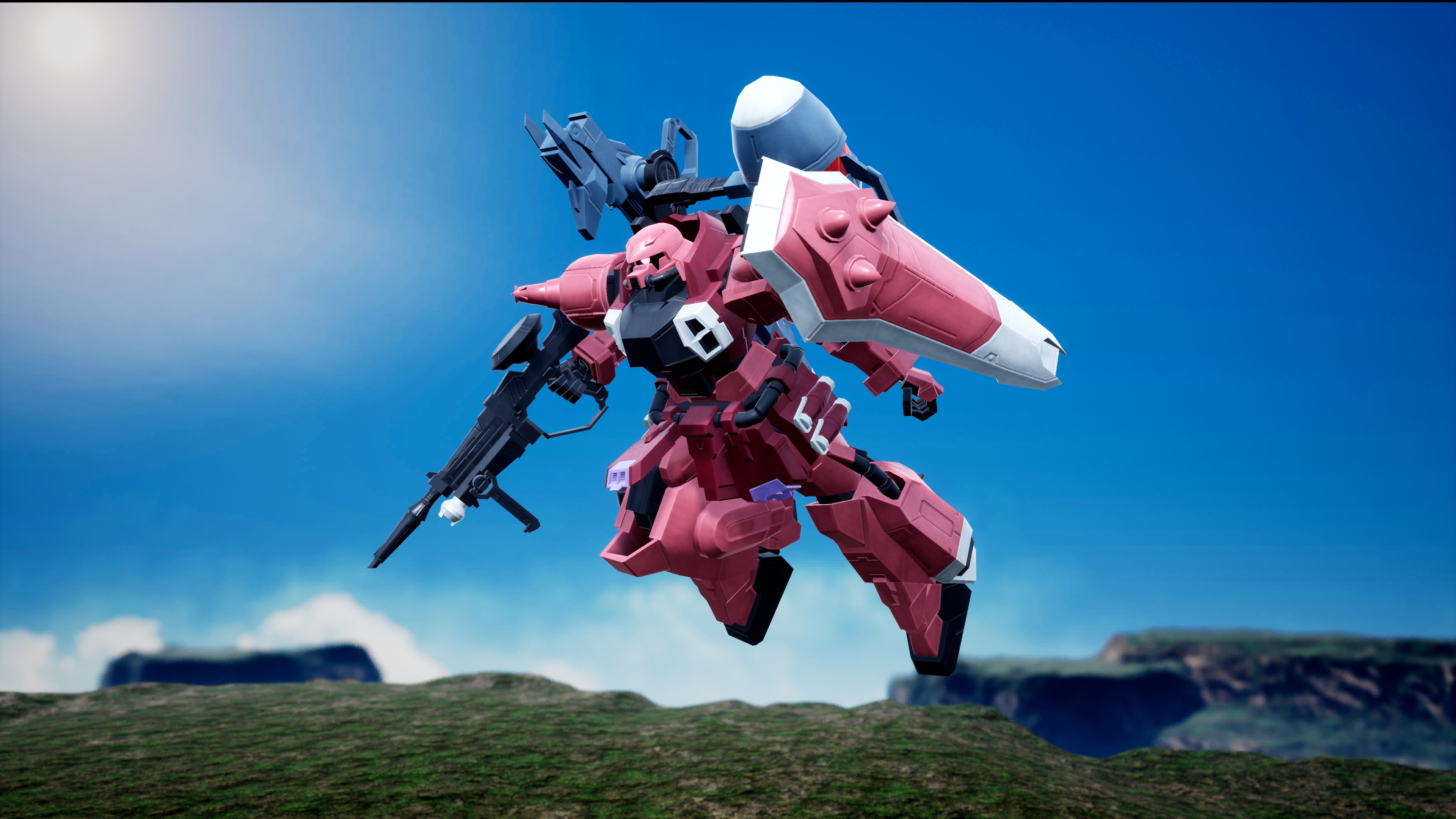
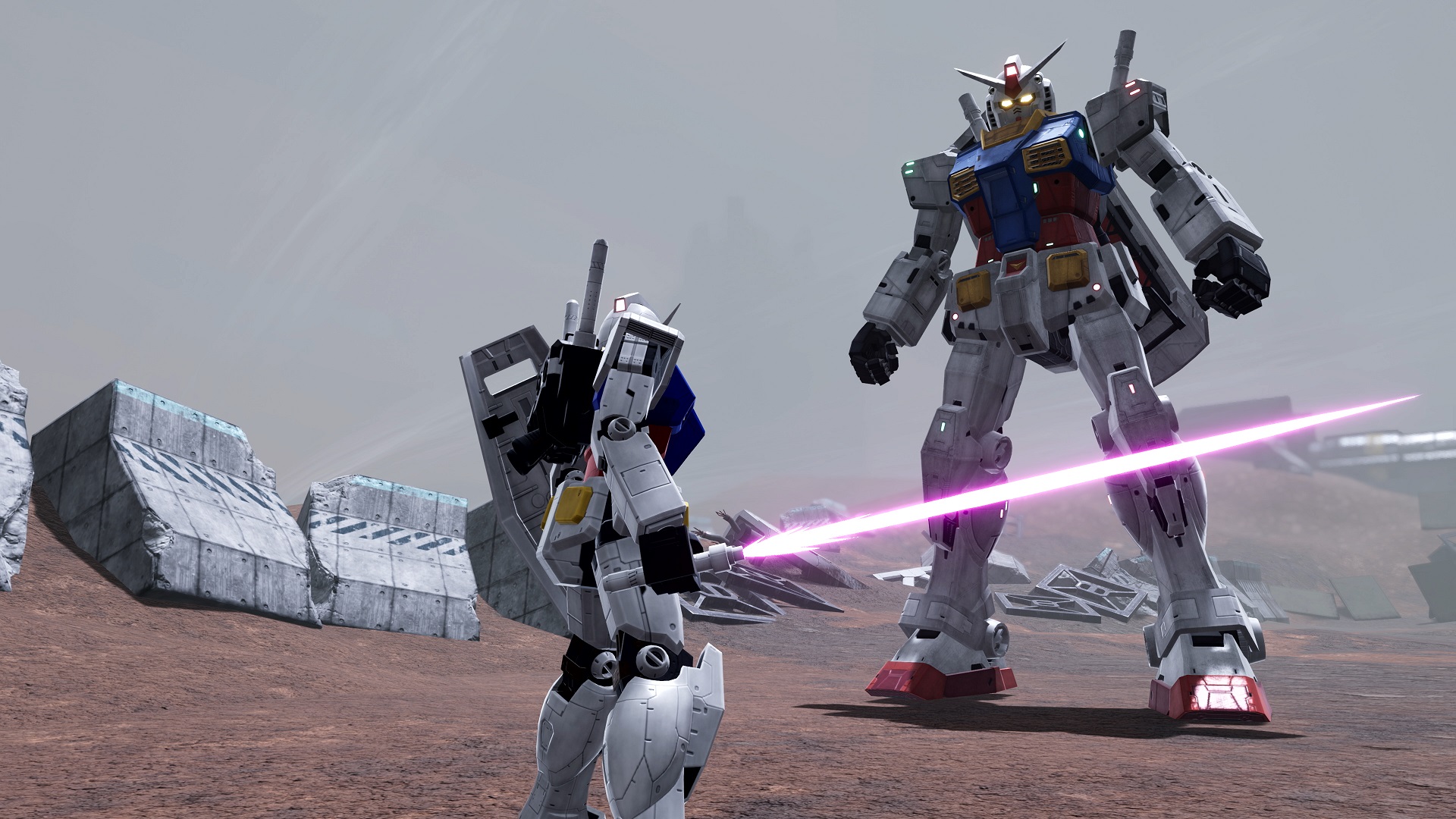
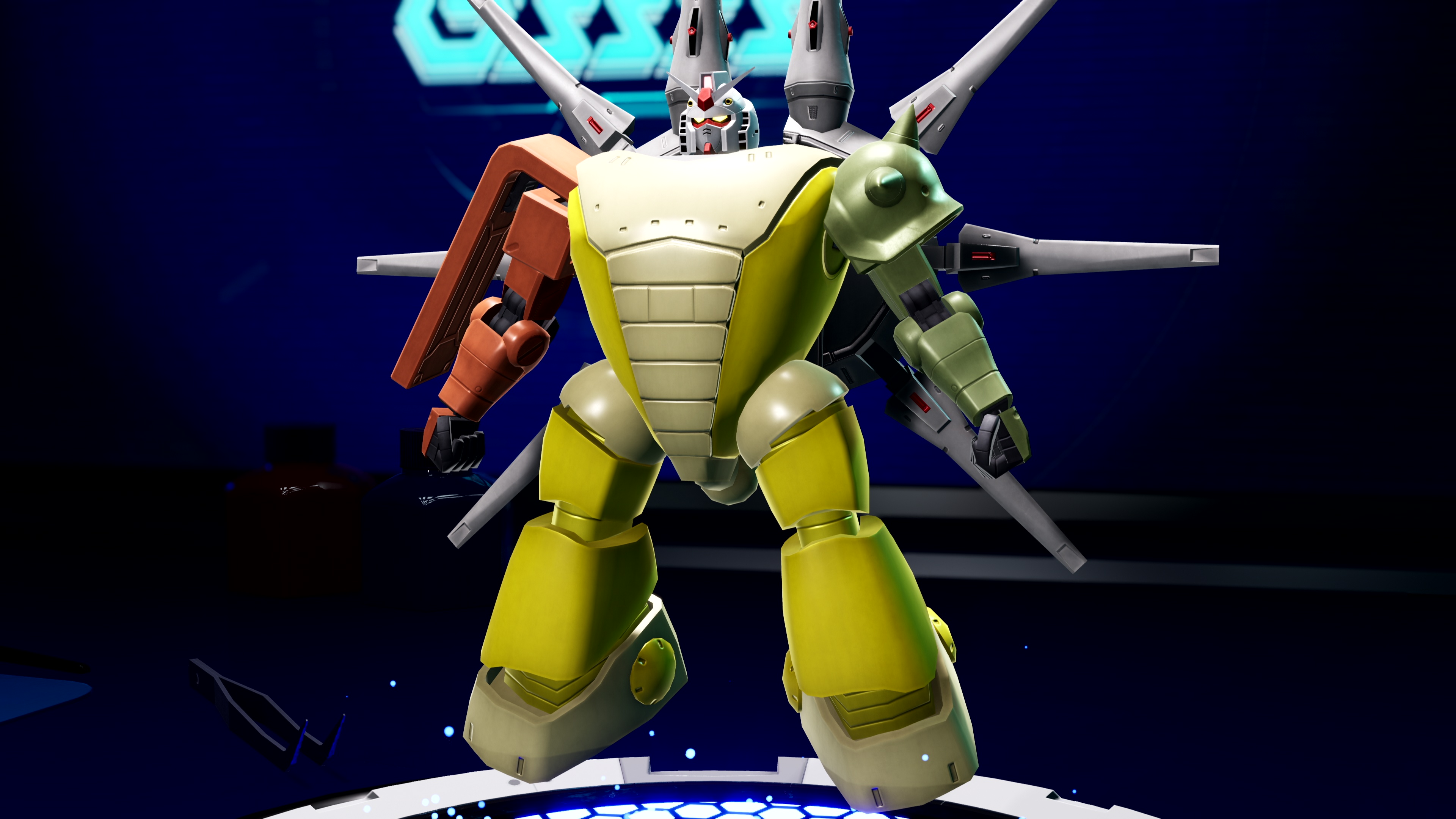
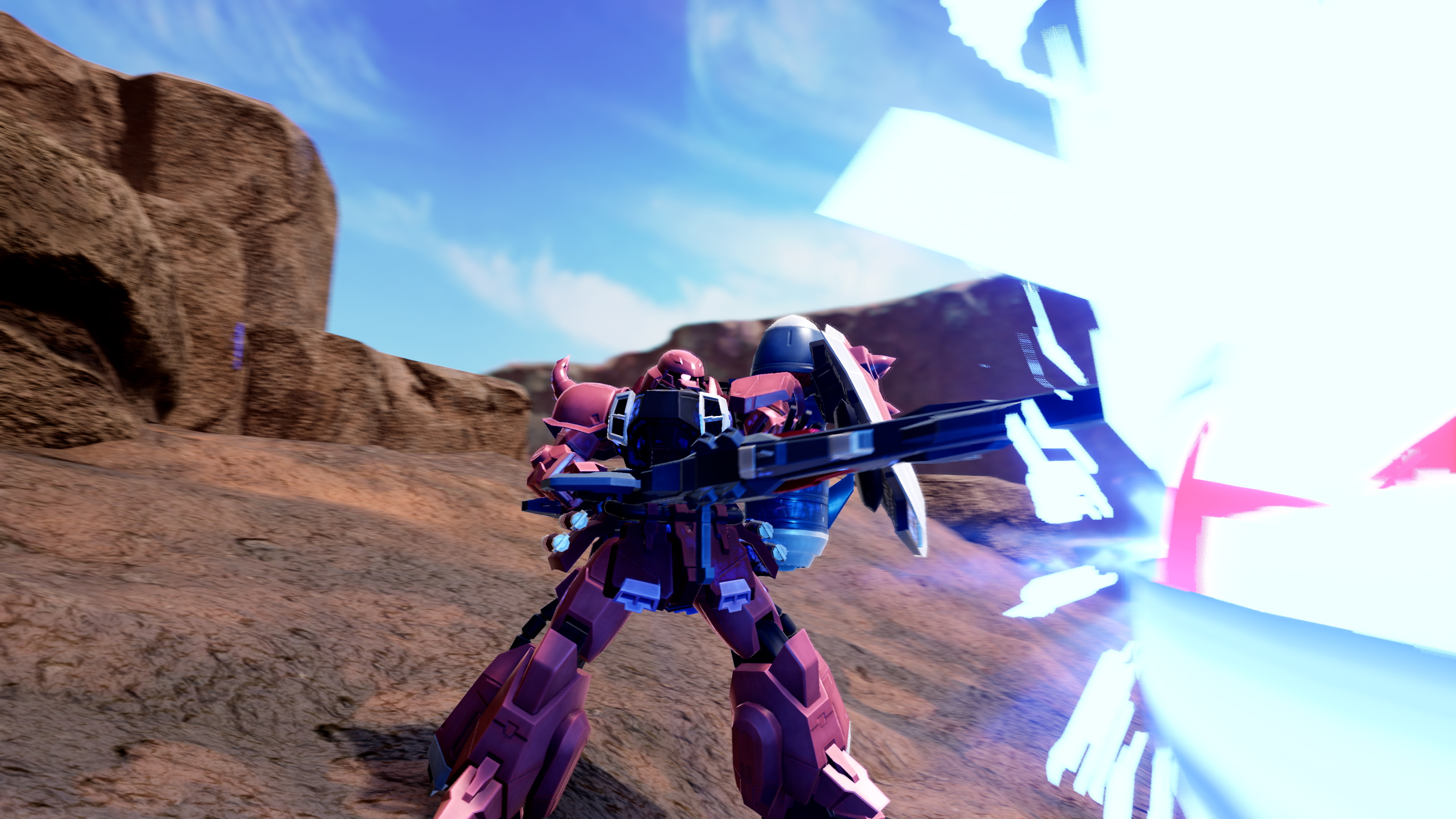
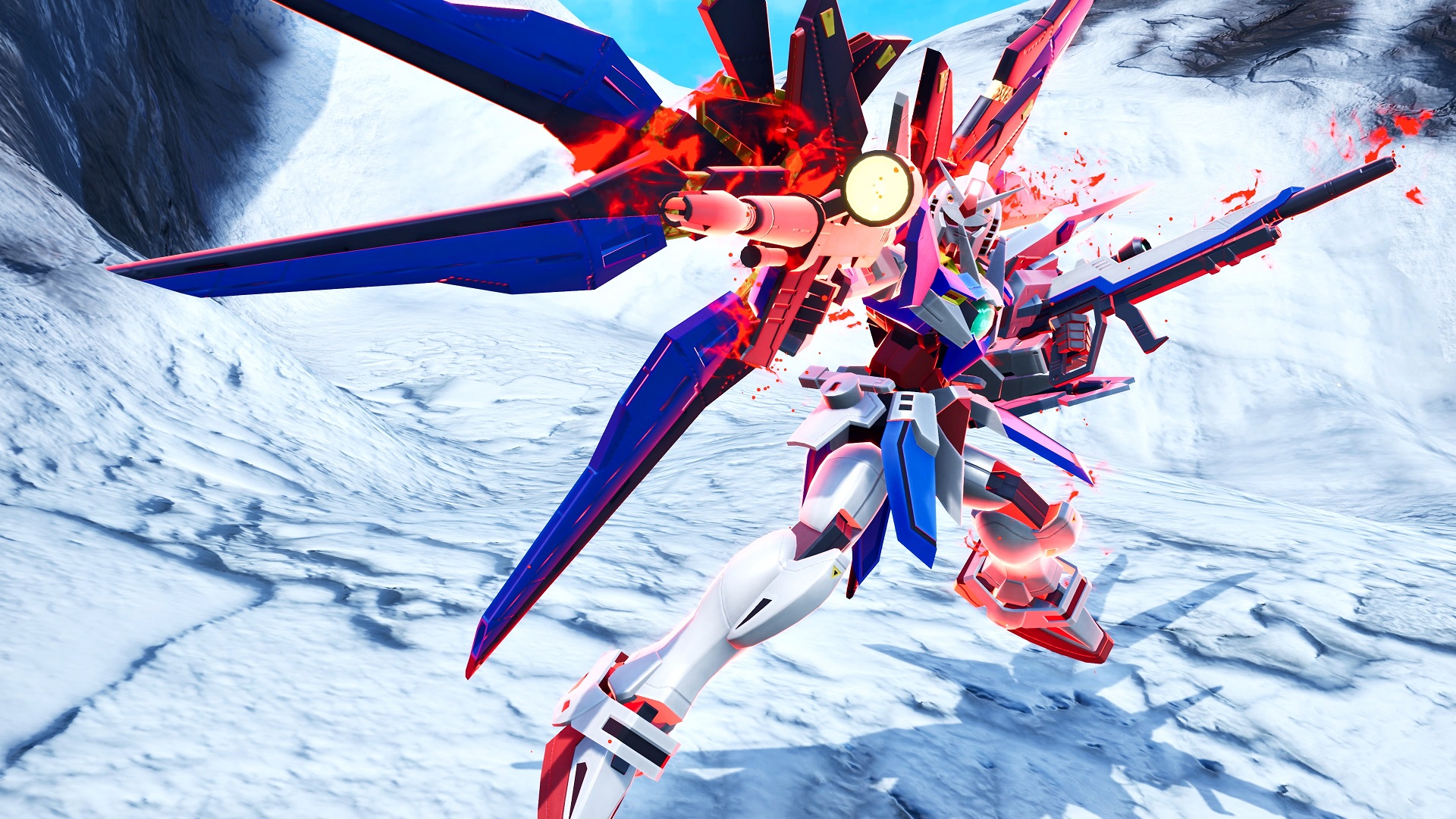
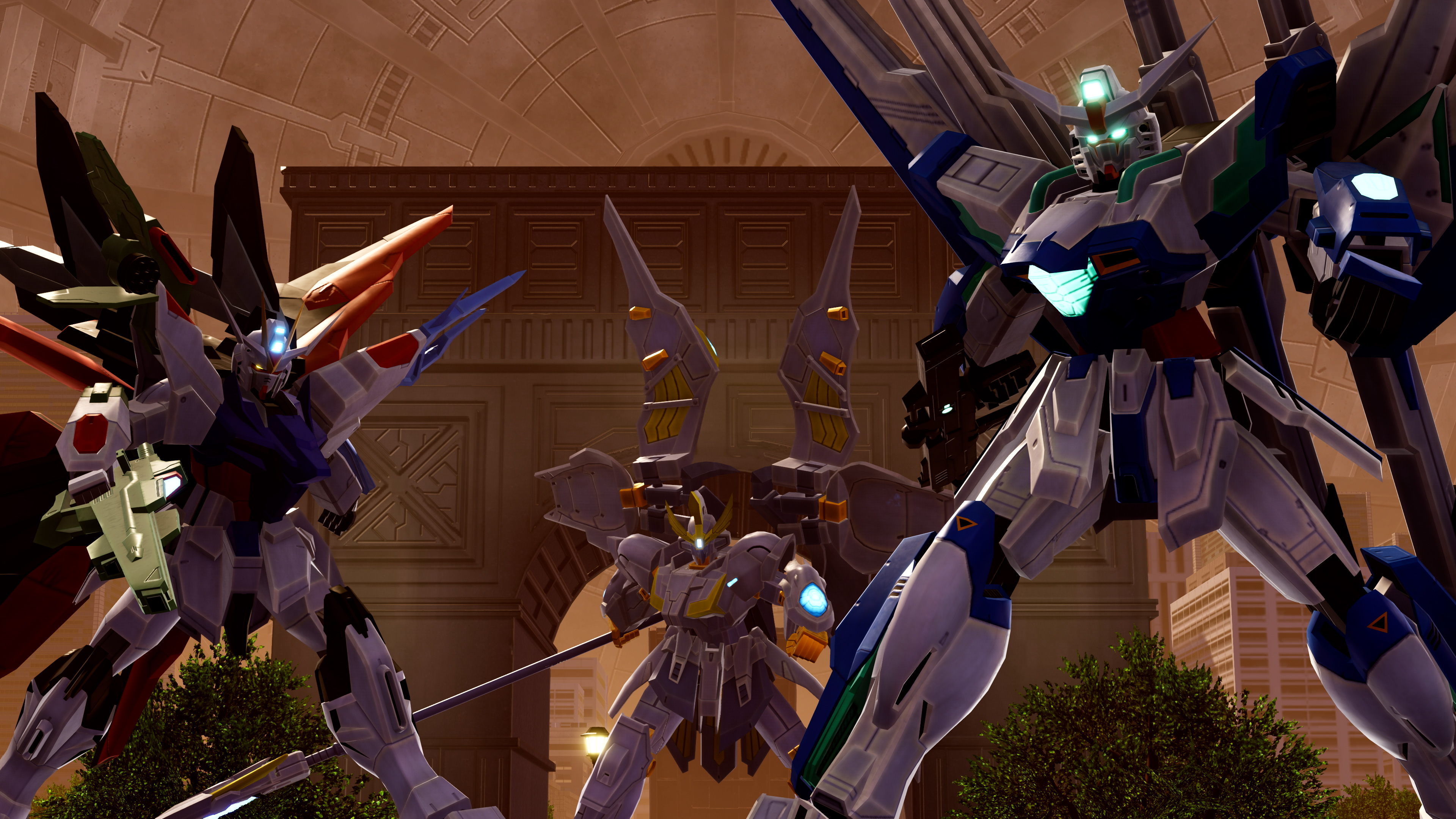
There's a campaign mode in Gundam Breaker 4, but I have a feeling its plot won't prove to be a big draw for me or others who like the (good) Gundam series that do their best to use cool robots to explore the value of war and humanity's eternal struggle towards understanding over bloodshed. The only theme here is “Gundam models are cool,” and everywhere I looked in Gundam Breaker 4 there was a small touch that reinforced it:
- On top of mixing and resizing parts you can minutely adjust their positioning to better fit together.
- The paint menu offers so much granularity you could spend hours in it, but it also includes presets for slapping on iconic paint jobs. Of course there’s weathering, too.
- You can personalize your online lobby by showing off one of your custom mobile suit, complete with a configurable pose.
- When you look at another player’s avatar online, you can see what parts they’re using to recreate the build yourself.
- You can now dual wield weapons, so no need to choose between a beam saber and an axe
- There’s a new test mode for quickly trying out weapons and skills.
- It’s not a PvP game, but a bounty hunter mode lets you battle the Gunpla that other players create.
I'm rarely drawn to loot games, but hell, they got me: I love Gundam. And the fact that Gundam Breaker 4 supports up to three-player co-op makes it even more appealing for me. I had fun with the combat in the 30 minutes or so I got to play, but alone I don't see the moment-to-moment action sustaining my interest to the same extent as something like Armored Core: the enemies I faced were largely either fodder or damage sponges without much in the way of lively AI. But that's kind of the point of this sort of game: they're there to be churned through, to offer up their plastic parts by the dozens for you to collage into a beautifully weird monstrosity.
If I'm going to wade through thousands of pieces of loot to build my ultimate Gundam, I definitely want my friends to be there to see it.

